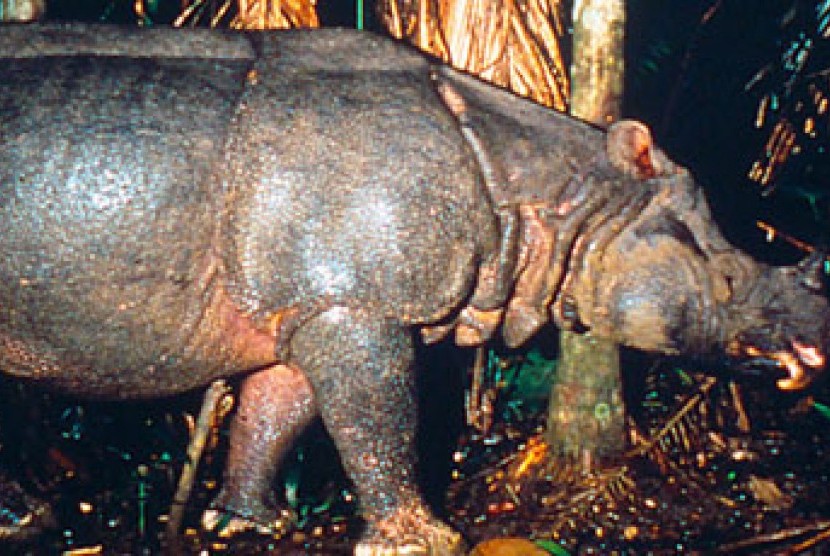REPUBLIKA.CO.ID, JAKARTA – World Wildlife Fund (WWF) and International Rhino Foundation (IRF) add 120 automatic video cameras to observe and protect Javan rhinoceros (Rhinoceros sondaicus sondaicus) in Ujung Kulon National Park. “The addition of video camera is to add the accuracy-based information of Rhinoceros in Ujung Kulon. On 2011, video camera identified 35 rhinos. About 22 are male and the rest is female,” the Coordinator of Rhino Conservation of WWF in Indonesia, Adhi Hariyadi, said on Monday.
Javan rhinoceros is one of the endangered species in the world. Its population is less than 60. Javan rhinoceros consisted of three subspecies, Rhinoceros sondaicus inermis living in Myanmar, Rhinoceros sondaicus annamiticus living in Vietnam, and Rhinoceros sondaicus sondaicus living in Ujung Kulon, Indonesia.
Myanmar rhino was extinct years ago and followed by the extinction of Vietnam rhino in 2011. Its population in Ujung Kulon becomes the last in the world. Hariyadi said, the monitoring team also observes the rhinos’ DNA.
The Head of Ujung Kulon National Park, Moh Haryono, said, with 160 video cameras set in the park, other information on wild animals will be monitored. It also observes human activity, which may intrude the habitat of rhinos.
Nationally, the Ministry of Forestry has announced 14 endangered species including Javan rhinoceros. “The population of Javan rhinocheros is expected to increase by three percent,” Haryono said.
The Ministry of Forestry also prepares the roadmap as a guide to reach the target. Prepared by the Directorate of Biodiversity Conservation (KKH), the target is the indicator of the performance of Directorate General of Forest Protection and Nature Conservation (PHKA).
Ujung Kulon National Park is the last refuge of Javan rhinoceros. It is one of five first national parks in Indonesia. The park encompasses an area of 122,956 hectare, with 44,337 hectare of them are marine.


